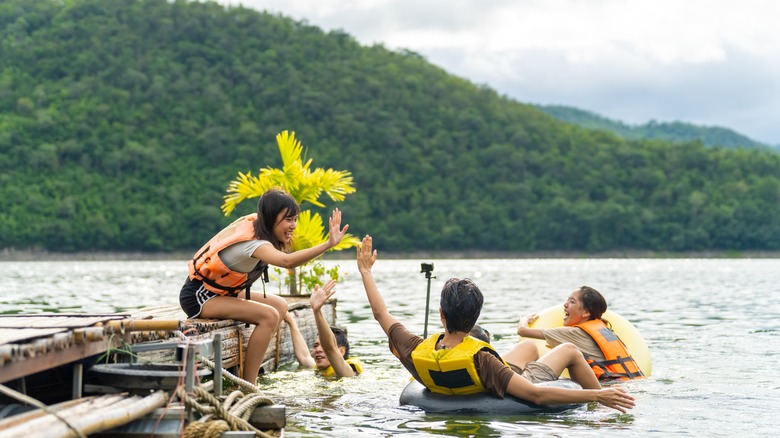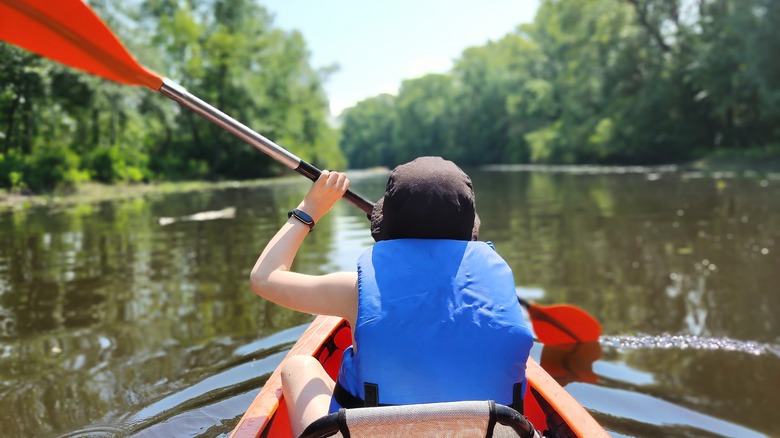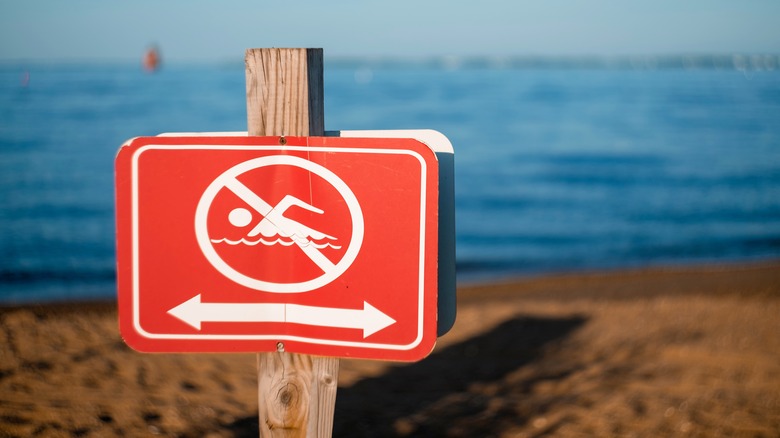Safety Tips That'll Help Prevent Drownings In Rivers And Lakes
During warm-weather months, many outdoor adventurers choose to spend time at destinations near bodies of water, such as freshwater rivers and lakes, including a number of various state and national parks. Many of these destinations offer a tremendous variety of water activities like swimming and boating. There are also several local, state, and national parks that offer paddle sports — canoeing, kayaking, and paddleboarding. There is also outstanding fishing in national parks and other public recreation areas.
While all of these water-related sports offer a great chance to relax, have fun, and stay cool during the warmer portion of the year, they also each have a common inherent risk — drowning. While drowning is an obvious risk for swimming or snorkeling, many may not realize it is equally as common to drown while participating in other watersports where you may not actually intend to be in the water. However, drowning is one of the most common ways people die while fishing and is the leading cause of boating-related deaths. So, it is equally important to know how to keep yourself from drowning if you fall in the water as it is when you are swimming. During your next outdoor adventure on or near a body of water, follow these safety tips that'll help prevent drownings in rivers and lakes.
Wear life jackets and keep a watchful eye on kids
The number one cause of death for swimmers and boaters is drowning. According to the U.S. Coast Guard, a full ¾ drowning accounts for a full ¾ of deaths among boaters. Of those, nearly 90% were not wearing a life jacket. So, obviously, the odds of not drowning are significantly better if you are wearing a life jacket. That holds true regardless of swimming ability. Inasmuch as life jackets are among the life-saving equipment every boater should have and are actually required by U.S.C.G. regulations, it is especially important to choose the right life jacket for kids. The Coast Guard only requires kids to wear a life jacket while in a moving boat. Some states or local jurisdictions require young kids to wear one while swimming. Regardless of whether it is mandated, it is a good idea to have them wear one whenever they are in or near water.
Even if they are wearing life jackets, it is critical to keep a watchful eye on children while they are swimming, playing in the water, or on a watercraft. Swimming in a group can help ensure everyone, adults and children, is being watched to ensure safety, assuming no one gets distracted. Even strong swimmers should avoid swimming alone. It is always much safer to have at least one other person with you in the water in case of some unforeseen issue or accident.
Act responsibly and obey signs, rules, and warnings
Whether swimming, tubing, boating, paddling, or partaking in any other water-related activity, it is important to act responsibly and obey any posted signs, as well as all rules and regulations for your activity and area. If there is a "no swimming sign" posted, whether permanent or temporary, don't get in the water. Areas are typically designated as a "no swimming zone" because of hazards or other safety concerns. So, heed the warning. Additionally, don't break the rules to partake in an activity that is banned in a certain area, such as cliff diving, for instance.
Boaters should ensure their equipment is in good working order and that their boats are equipped with all U.S. Coast Guard-required items. They should also follow the rules of the road as prescribed by the Coast Guard as well as any local rules and regulations, such as no wake zones or no motor areas. Finally, refrain from drinking while recreating on the water. Alcohol has been shown to impair both judgment and reaction time, which can be a huge issue whether driving a boat or swimming in an area with a current. It is actually illegal to drink alcohol while operating a boat in all 50 states, and BUIs (boating under the influence) are typically strictly enforced by wildlife officers and marine patrols in each state.


